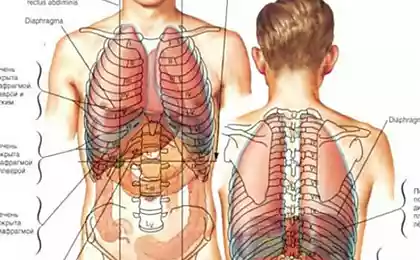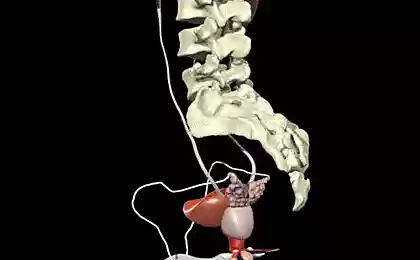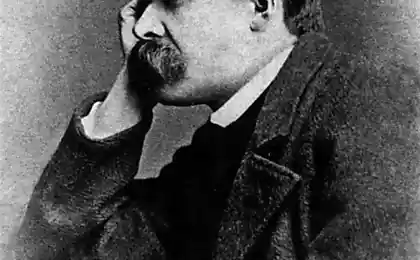295
Psychosomatic technique "Conversation with symptom"

Visualization of the connection between mind and body in the process of psychosomatic work
Ecology of life. Psychology: If emotions are constantly not expressed, interrupted, the psyche brings this phenomenon into the field of bodily sensations and symptoms. The body becomes a map of unlived feelings, and each symptom becomes a signal of suppressed emotional processes.
The phenomenon of psychosomatics: when the body says what the mind is silent
Modern science increasingly recognizes the inextricable connection between the psychological state of a person and physical manifestations in the body. Psychosomatics studies this relationship, showing that many bodily symptoms can result from unexpressed emotions, psychological trauma, or prolonged stress.
When we systematically suppress our emotions without giving them a natural outlet, the body looks for alternative ways to express that energy. Often this energy is transformed into bodily symptoms – from headaches and muscle tension to more serious conditions such as ulcers, hypertension or autoimmune diseases.
It's important to understand:
Psychosomatic symptoms are not imaginary pains or pretenses. These are real physical sensations with deep psychological roots. The body does not lie; it reflects what the psyche has failed to process in a healthy way.
According to research in psychoneuroimmunology, chronic stress and suppressed emotions can affect the immune, endocrine and nervous systems. Prolonged suppression of feelings leads to an imbalance of neurotransmitters and hormones, which directly affects physical health. According to the World Health Organization, up to 70% of physical diseases have a psychosomatic component.
Technique "Conversation with the symptom": theoretical foundations
The Symptom Talk technique is based on the notion that each physical symptom carries a message from the unconscious. This is a technique developed at the intersection of Gestalt therapy, psychosomatics and procedural work, which allows you to establish communication between consciousness and bodily manifestations.
The founders of this approach can be considered Sigmund Freud, who first spoke about conversion symptoms, Wilhelm Reich with his concept of muscle shell, as well as Fritz Perls, the creator of Gestalt therapy, and Arnold Mindell, who developed process-oriented psychology.

Visualization of the process of internal dialogue with the body and symptom
This technique is based on several key principles:
- Integrity principle The body and mind are seen as a single system where all parts are interconnected.
- The principle of symbolism Physical symptoms can be symbolic expressions of psychological processes.
- The principle of awareness Increasing awareness of bodily sensations and their connection to emotions promotes healing.
- Principle of dialogue Making contact with the symptom through dialogue helps integrate the alienated parts of the psyche.
At the heart of this technique is the idea that all parts of our personality, including our symptoms, have a specific intention. The symptom is seen not as an enemy to be suppressed or destroyed, but as a part of the personality that requires attention and expression. By consciously engaging in dialogue with a symptom, we can uncover its hidden message and find new, healthier ways to meet the needs behind it.
Step-by-step guide to the “Conversation with Symptom” technique
Below is a detailed guide to using a technique you can use yourself or with the help of a psychologist.
- Symptom selection and preparation
Choose a body symptom that worries you and that you would like to work with. This can be a headache, tension in the neck, back pain, heaviness in the chest, etc. Find a quiet, quiet place where you will not be disturbed for 20-30 minutes. Take a comfortable position, sitting or lying down. - Contact with the body
Close your eyes and direct your attention within. Take a few deep breaths and exhales. Gradually scan your body, noting different sensations. When you find a symptom, focus all your attention on it. Note its localization, intensity, quality (acute, dull, pulsating, etc.). - Amplification of sensations
Increase the feeling of the symptom, listen to it more carefully. Imagine that you can zoom in, make it more visible. Give that feeling shape, color, texture, temperature. If it could make a sound, what would it be? If it had a voice, what would it be? - Personification of symptom
Think of the symptom as an entity, character, or image. It can be an animal, a human, a mythical creature, or an abstract form. Allow this image to emerge spontaneously without evaluating or analyzing. - Establishment of dialogue
Start a conversation with a personalized symptom. Ask him questions: “Who are you?”, “Why are you here?”, “What message do you want to convey to me?”, “What do you need from me?”, “How long have you been with me?” Let the symptom answer—the answers may come in the form of words, images, sensations, or intuitive guesses. - Deepening dialogue
Continue the conversation by asking clarifying questions. Ask about the relationship of the symptom to your emotions, life situations, relationships. Explore what repressed feelings or unmet needs may be behind the symptom. Maybe it’s protecting you from something or trying to draw attention to something important. - Identification of the need
At this stage, it is important to identify the true need behind the symptom. Ask directly: “What do you need in order for you to leave or transform?”, “What changes in my life would help you?” - Agreement and integration
Try to find a compromise or agreement with the symptom. Discuss how you can meet the identified need in a healthy way. Thank the symptom for its message and express your willingness to listen to it in the future, not through pain or discomfort, but through awareness. - Completion and action
Slowly complete the dialogue. Note whether the symptom changed during the work (change in intensity, localization, quality). Write down the main insights and agreements. Make a plan of specific actions aimed at meeting the identified need.

Symbolic image of the transformation of emotional pain into healing energy
Practical recommendations for the effective application of technology
Key tips:
- Regularity. Practice the technique regularly, especially for chronic symptoms. A single session can provide primary insights, but deep transformation requires systematic work.
- Invaluability. Do not judge or criticize the resulting images and answers. Even if they seem illogical or strange, treat them with curiosity and acceptance.
- Documentation. Keep a practice journal, writing down your dialogues with symptoms, insights, and changes. This will help track progress and notice patterns.
- Integration into life. Be sure to translate insights into concrete actions. It is not enough to simply understand the message of the symptom – it is important to make the necessary changes in daily life.
- Professional support. When working with serious symptoms or psychological injuries, it is recommended to carry out the technique under the guidance of a qualified psychotherapist.
When is the “Symptom Talk” technique particularly effective?
This technique shows the greatest effectiveness in the following cases:
- Psychosomatic disorders with unclear medical etiology;
- Chronic pain and discomfort that are not amenable to purely medical treatment;
- Recurrent symptoms that tend to occur in certain emotional or life situations
- Conditions associated with stress and emotional stress;
- As a supplement to basic medical treatment to speed up the recovery process;
- For the prevention of psychosomatic disorders in people prone to somatization of emotions.
Client M., 35, suffered from regular migraines, especially aggravated by stress at work. During the use of the "Conversation with the symptom" technique, her migraine was personified in the form of a strict teacher with a pointer. During the dialogue, it turned out that migraine served a protective function - forcing a woman to stop and rest when she ignored signals of fatigue. "Teacher" also pointed to her perfectionism and fear of disappointing others. After several sessions, M. learned to recognize early signs of overwork, set clearer boundaries at work, and included regular rest breaks in her schedule. The frequency and intensity of migraines have decreased significantly.
Scientific substantiation of the effectiveness of technology
Although the "Symptom Talk" technique has deep roots in psychotherapeutic practice, modern scientific research also confirms its effectiveness:
- Research in neuroscience shows that focused attention to bodily sensations activates areas of the brain associated with interoception (internal perception), which can modulate the perception of pain and discomfort.
- Work in psychoneuroimmunology demonstrates that emotional expression and awareness can affect immune function and inflammatory processes in the body.
- Brain imaging techniques confirm that psychotherapeutic interventions involving body awareness can alter neural networks associated with pain perception and emotional regulation.
- Research in epigenetics shows that psychological interventions can affect the expression of genes associated with the body’s stress response.
The Symptom Talk technique is a powerful tool for restoring the connection between the body and the psyche, between the mind and the unconscious. It helps transform a symptom from an unpleasant, unwanted phenomenon into a valuable informant and helper on the way to a more conscious, healthy and holistic life.
Practicing dialogue with bodily symptoms is not only a way to alleviate physical discomfort, but also an opportunity to gain a deeper understanding of yourself, your true needs and aspirations. In the process, we learn to listen to the wisdom of our bodies, develop emotional intelligence and gain new resources for self-healing.
Remember that psychosomatic work is not a substitute for medical diagnosis and treatment, but can be a valuable addition to them, contributing to a more integrated approach to health, where the body and mind are treated as a whole.
Glossary of terms
Psychosomatics is an interdisciplinary field that studies the influence of psychological factors on the occurrence and course of bodily (somatic) diseases.
Somatization is the process of transforming psychological distress into bodily symptoms.
Interoception is the perception of the internal sensations of your own body, including pain, temperature, itching, muscle tension, visceral sensations, etc.
Amplification - in psychotherapy: intentional intensification of a symptom or sensation in order to better understand and study it.
Personification is the representation of an abstract phenomenon or sensation as a particular character or being.
Gestalt therapy is a branch of psychotherapy that focuses on becoming aware of the present moment, taking responsibility for one’s experiences, and integrating alienated aspects of one’s personality.
Process-oriented psychology is an approach developed by Arnold Mindell that integrates work with bodily symptoms, dreams, and interpersonal conflicts.
Muscle shell is a term coined by Wilhelm Reich for chronic muscle clamps that form as protection against anxious emotions.
The conversion symptom in psychoanalysis is a physical symptom that is a symbolic expression of psychological conflict.
Psychoneuroimmunology is a scientific discipline that studies the relationships between mental processes, the nervous and immune systems of the body.























